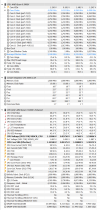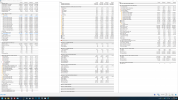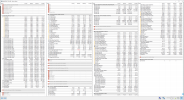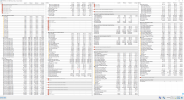Sorry, I cannot comment further about those values.
I may have possibly found a fix to the issue and thought I'd run it by you given your experience with I2C/SMBus and my understanding of how HWiNFO reads the data. If you don't want to read the wall of text below (it provides context), I've put the main question for you in bold text at the bottom of the post.
Summary
I'll use bullet points to make it shorter.
- Received new PC
- Installed Windows 11
- Installed drivers for devices from motherboard vendor's website
- Installed AMD Chipset Drivers (message at the end said 'Success' for all components, and the log file showed each driver as 'success')
Testing
With the above, it's a very standard process for any new build or OS reinstall. I then left it for a while until I noticed VID reaching 1.55000V and created this thread.
However, the other evening I was looking through Device Manager at the PSP device and noticed that although Windows said the device is working properly, under the item's Events tab, it showed that the device had never started 'Device not started'. I did a test and uninstalled the PSP device, deleted the driver, scanned for new hardware and an unknown security device showed (obviously the PSP device). I manually selected a driver from the unpacked AMD Chipset Driver package (3.10.22.706). The status then changed to 'Device started'.
Since that seemed to work, I thought I'd look at other drivers installed by the AMD Chipset Driver installer. Most of them had the same issue - no yellow warning triangle, a message saying the 'device is working properly', but under Events the most recent log showing 'Device not started'.
AMD I2C Controller driver / GPIO3 / SMBus
The AMD I2C Controller driver had the same issue - alternating 'Device configured' and 'Device not started' messages - these correspond to the dates I installed new chipset drivers.
As mentioned above, no 'yellow warning triangle' was displayed and under 'General', and the device status showed as "This device is working properly"
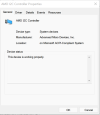

After uninstalling the device -> deleting drivers (if given the option) -> scan for new hardware -> manually select the driver from the driver package, it finally seemed to work, although installed a driver from 2019. Updating the driver using Device Manager did not work, so I repeated the above steps (uninstalled, delete driver, scan, etc.) and Windows automatically selected the latest driver.

Here's the two events that should have happened after using the AMD installer.
Code:
--- EVENT [06/01/2022 17:51:23]
Device ACPI\AMDI0010\3 was configured.
Driver Name: oem36.inf
Class Guid: {4d36e97d-e325-11ce-bfc1-08002be10318}
Driver Date: 01/11/2021
Driver Version: 1.2.0.118
Driver Provider: Advanced Micro Devices, Inc.
Driver Section: amdi2c_Device.NT
Driver Rank: 0xFF0001
Matching Device Id: ACPI\AMDI0010
Outranked Drivers: amdi2c.inf:ACPI\AMDI0010:00FF0001
Device Updated: false
Parent Device: ACPI_HAL\PNP0C08\0
--- EVENT [06/01/2022 17:51:23]
Device ACPI\AMDI0010\3 was started.
Driver Name: oem36.inf
Class Guid: {4d36e97d-e325-11ce-bfc1-08002be10318}
Service: amdi2c
Lower Filters:
Upper Filters:
Rather than repeating the above with screenshots, I'll simply state I did the same with each device that the AMD Chipset Driver installer told me it had installed. Even the SMBus, where there is no need for a driver so a 'dummy' is used, had the wrong one - it was a null driver. The correct 'dummy' worked. Here's a screenshot that probably explains it better as I'm tired.
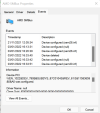
The entire purpose of creating this thread is that when correcting the I2C driver issue, I noticed that VID no longer went above 1.50000V. I tried everything I could over a period of three days testing to get it to go to 1.55000V as it did before, but no (at least not so far). On top of that, reported clocks ~5% higher, not that it really matters.
The CPU is still in stock settings, apart from XMP being enabled
(currently running an AVX2 workload, hence the lower clocks).
And finally getting to the point, do you believe that a 'faulty' I2C driver could have impacted readings from the Nuvoton super I/O in some way specifically in HWiNFO? All I did was to make sure the devices had the correct drivers and that the Event tab showed the most recent log as 'Device started'.
I've not changed anything else. As mentioned above, I've now tried everything that used to make the VID go to 1.55000V (and VDDCR SVI2 TFN up to 1.55000V as well) over a period of three days and it seems to now be working correctly (VID Effective never goes above 1.50000V). What sort of behaviour would you expect to see with essentially no I2C driver installed?
